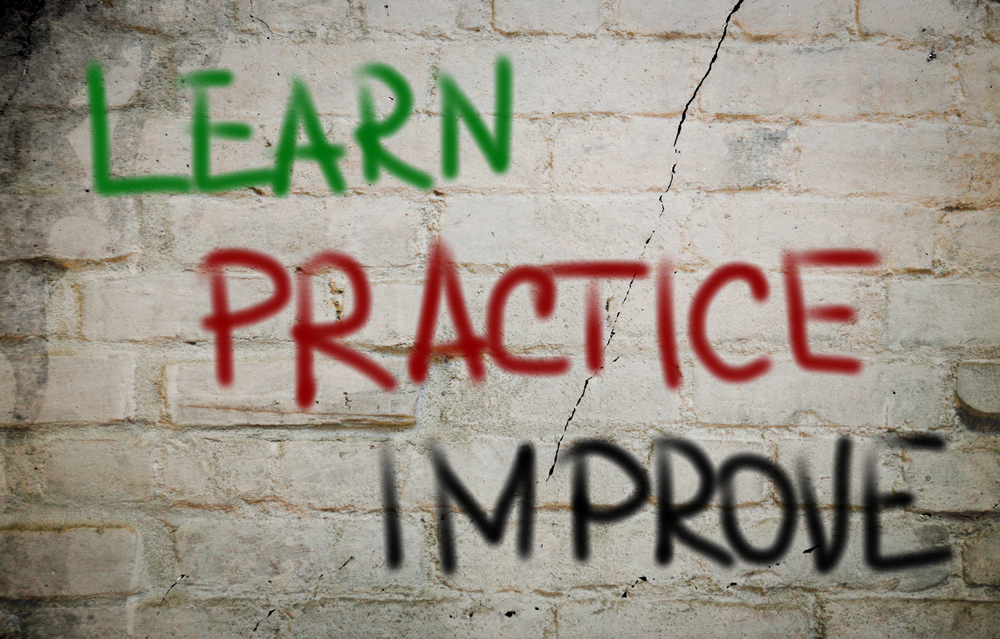
It’s time for a reboot of sign language interpreter education. Two year interpreting programs should become pre-professional programs that lead to a bachelor’s degree in interpreting.
As professional sign language interpreters and sign language interpreter educators, we all understand the difficult work we are tasked with and we recognize when it’s working and when it’s not. Recently, four such professionals met over a three-day period to think about the current state of interpreter education and how sign language interpreter preparation needs to change. Each of us in that group of four brought differing experiences to the table and more professional hats than we care to count. We believe that many in the field have known this conversation is desperately needed, but more than that, it is time to act.
Our group includes interpreter educators, a Deaf professional, an interpreter educator with Deaf parents, a parent of Deaf children, and a leader in a post-secondary interpreter education program. We worry about the skills of the interpreter who arrives to interpret for our Deaf mother and father, about whether our Deaf children will understand the interpreter who comes to basketball practice, and if we will be able to find an interpreter who is adequately prepared for the highly academic and intellectual meeting we attend. We each choose to believe we can make a difference. It was Margaret Mead who stated, to “Never doubt that a small group of thoughtful, committed citizens can change the world. In fact, it’s the only thing that ever has.”
It is time to radically examine how we prepare sign language interpreters nationwide. For far too long we have recognized that the preparation of an interpreter is nearly impossible to do in a two-year time period – whether those two years are part of a two-year associate degree program or the last two years of a baccalaureate degree program. We believe it is now time for community action. Collectively, we need to rethink how we prepare sign language interpreters and recognize that it takes a village to fully prepare interpreters. We are answering the call to action asked for by Cindy Volk in her Street Leverage article Sign Language Interpreter Education: Time for a National Call to Action.
The proposed reformation is a three-legged stool; that is, the seat is a new way of preparing sign language interpreters who are linguistically and culturally empowered to making a lasting difference, and the three legs are what we need to do to support this change, namely empowering educators, enhancing the curriculum and establishing a strong foundation in language and culture.
Empowering Educators
More often than not, we teach how we were taught. This is a widely accepted notion and one that rings true in many fields of study. Consequently, there is a need to provide training on how to effectively teach, assess our students on their progress towards mastering course outcomes and develop the curriculum. If we are to reform how we educate sign language interpreters, we have to first give educators the tools they need to not only rethink interpreter education but to change it. We need to prepare educators of today to be the leaders of tomorrow.
Enhancing the Curriculum
It has often been stated that the challenge of preparing a student to be a sign language interpreter in a two-year program is simply insurmountable. The four of us have heard repeatedly from faculty in associate level programs that they just can’t get it all in the allotted number of courses. We’ve heard from faculty at baccalaureate level programs that all too often they receive students from associate programs who do not possess the necessary language skills to proceed. We all need to be held accountable and take action to correct this.
Four-year programs need to be able to depend on two-year programs to fully prepare students for entry into the major of sign language interpreting. Two-year programs need to depend upon four-year programs to close the circle and complete the preparation so that students leaving are well-prepared for the field. Both two-year and four-year programs need to be involved with preparing interpreters in a complementary way rather than a competing or exclusive manner.
We suggest a reconsideration of the purpose of two-year programs. They should be pre-professional programs, with a focus on the foundations of interpreting. Courses should include ASL, translation, social justice, Deaf culture, pre-interpreting skills, and a stronger emphasis on the English language. In addition, interpreting programs should capitalize on the general education curriculum by creating a two year initial sequence that enhances the outcomes of students who are fully prepared to enter into interpreting programs with all the knowledge, skills, and dispositions necessary to succeed.
Ensuring Strong Foundations in Language and Culture
As Lou Fant stated in 1974, “Prime prerequisite for an interpreter of any language is mastery of the languages he wishes to interpret. It seems so obvious that one feels embarrassed, almost, to mention it, yet I fear it is too often not given sufficient attention.”1 We would all agree that one of the most critical aspects of preparing future sign language interpreters is the development of a strong foundation in the languages they will use as interpreters. It is impossible to learn skills in interpreting, while also learning a second language. As a field, it is time we acknowledge this and require a strong foundation in ASL and English before entry into a sign language interpreting program. Rather than use two-year college programs to try and prepare students for the interpreting profession, why not use such programs to give students the linguistic and cultural foundations needed to then enter an interpreter education program?
Recommendations
-
Establish a taskforce to examine a Deaf/hearing co-teaching model to develop foundational fluency in ASL for students entering interpreter training programs.
-
Establish a track at the CIT biennial conference to address the need for reformation.
-
Begin discussions about the possibility of adding specialty areas of preparation (education, legal, medical, etc.) to interpreter education programs.
-
Examine the proliferation of interpreter education programs to determine if the need truly exists for so many programs.
-
Begin a discussion between program directors from both two-year and four-year programs on how to develop a national interpreter education curriculum and outcomes.
-
Research how competency-based education may be a model for our field.
-
Research how theories, models and frameworks of spoken language apply to the preparation of signed language interpreters.
An Example
An example of how two groups (e.g., two-year and four-year programs) can work together is the recent efforts of University of Arizona (UA) and Pima Community College (PCC). Currently, these two institutions are collaborating on the development of a framework that will address many of the issues raised in this article. The goal is to create a 2+2 program whereby students will begin at PCC with a focus on ASL skills and pre-interpreting skills. Students would then transfer to UA where they will study the interpreting process and further refine their skills as sign language interpreters. The language and culture foundations developed at PCC will be critical to the success of the students at UA. Both PCC and UA encourage other such programs in the United States to engage in similar collaborative efforts and, thus, reform how interpreters are prepared.
Conclusion
This type of reformation needs leadership and direction. We recommend that the three key organizations in sign language interpreter education – the Conference of Interpreter Trainers (CIT), the American Sign Language Teachers’ Association (ASLTA), and the Commission on Collegiate Interpreter Education (CCIE) come together and move forward in realizing this vision. It is our recommendation that the Presidents of these three organizations meet to examine how they can individually contribute to, collaborate on, and lead this reformation.
Reforming sign language interpreter education to graduate skilled, well-prepared interpreters should not be the concern of only a few people, but rather an urgent priority for all stakeholders, including sign language interpreting agencies, VRS companies, parents of Deaf children, children of Deaf parents, ITPs, and Deaf people. The time is indeed now – we must reform sign language interpreter education.
We want to acknowledge the ideas and contributions of several people who helped frame the ideas we’ve presented here. Thank you to Leslie Greer, Jimmy Beldon, and Amy June Rowley.
Questions for Consideration:
- How can your program make significant reformations in interpreter education?
- Do you think the time is now for such reformation in sign language interpreter education? Why or why not?
- Are the ideas presented in this article feasible/possible in your community, state, and in the nation? If not, why not?
Dr. Carolyn Ball has been an interpreter educator for over 25 years, teaching at Brigham Young University, Salt Lake Community College, William Woods University and the University of North Florida. Currently, she is the Executive Director of the VRS Interpreting Institute (VRSII) in Salt Lake City, Utah.
Taralynn Petrites, M.Ed., is the lead faculty of Sign Language and Interpreter Training as well as Department Chair of Behavioral Sciences at Pima Community College (PCC) in Tucson, Arizona. Taralynn has been teaching American Sign Language and Interpreting courses since 2002. She is currently working on her dissertation toward a Ph.D. in Higher Education Leadership.
Len Roberson, Ph.D., SC:L, CI, CT, has been involved in the fields of deaf education and interpreting for over 28 years. He is an active researcher, interpreter, and interpreter educator. Dr. Roberson is currently Associate Vice-President of Academic Technology and Innovation at the University of North Florida (UNF) and a tenured professor. His current research interests include the study of interpreting in legal settings, distance learning effectiveness, and service-learning in interpreter education.
References
1Fant, L. (1974) JADARA (Journal of Rehabilitation of the Deaf) Volume 7, Issue 3, 1974 (pp. 47 – 69).



